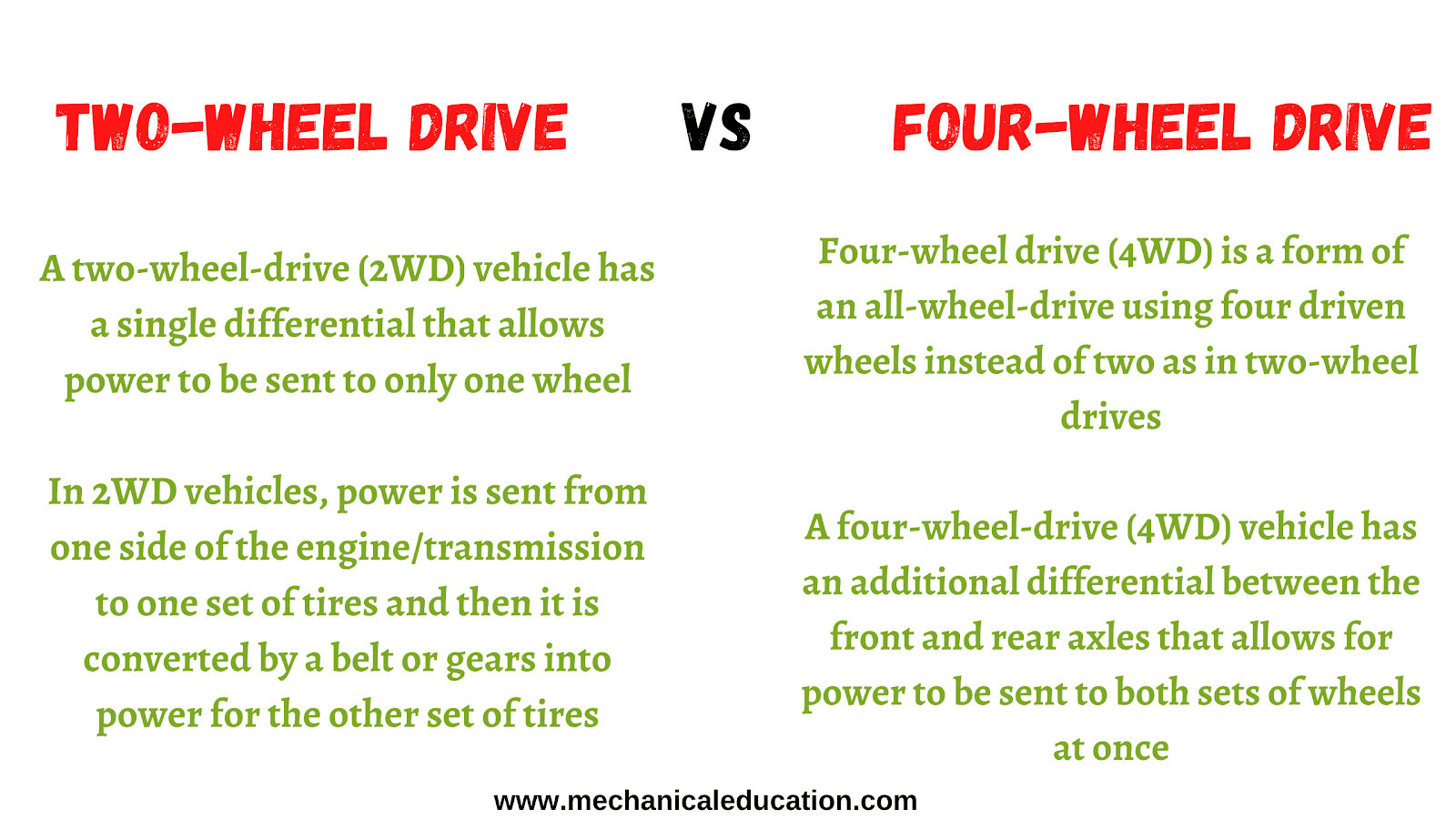Difference between Two-Wheel Drive and Four-Wheel Drive?
- Four-wheel drive (4WD) is a form of an all-wheel-drive using four driven wheels instead of two as in two-wheel drives.
- A two-wheel-drive (2WD) vehicle has a single differential that allows power to be sent to only one wheel.
- Four-wheel drive (4WD) vehicles have a multi-differential system that splits the power output between the front and rear wheels.
- In 2WD vehicles, power is sent from one side of the engine/transmission to one set of tires and then it is converted by a belt or gears into power for the other set of tires.
- A four-wheel-drive (4WD) vehicle has an additional differential between the front and rear axles that allows for power to be sent to both sets of wheels at once.
- In 4WD vehicles, all four wheels have their own set of gears so each tire receives power independently from both
- engines/transmissions so if there is an issue with any tire on either side, they will still have enough traction to move in relation to the ground.
- Two Wheel Drive has only one front and rear driven axle.
- Four-Wheel Drive has two or more driven axles. The power from the engine is transferred to a single driveshaft which then transfers power to both axles.
- In Four-Wheel Drive One driveshaft transmits power from the engine to an axle, but there is also a second driveshaft that can transmit power from another axle as well.
- In Four-Wheel Drive each tire will rotate independently, with different speeds and torques being delivered to each axle at different times depending on which direction it is turning (this system allows for better traction).
- Two-wheel drive is a type of vehicle propulsion system that uses two individual wheels on the front or rear of the vehicle. it provides less stability and maneuverability than four-wheel drive.
- Four-Wheel Drive design allows for better traction in slippery conditions, greater stability and maneuverability than a two-wheel drive.
- 4WD system adds traction by distributing power to all four wheels rather than just two, thereby improving off-road driving performance without compromising on fuel efficiency.
- Four Wheel Drive is more expensive than a two-wheel drive.
- Maintenance is more and costly than a two-wheel drive.
- Four Wheel Drive are less likely to get stuck in snow or mud, so they’re easier to use on unpaved roads.
- Four Wheel Drive increased safety when driving on slippery surfaces such as snow, ice, or mud.
- Four Wheel Drive have better traction and braking capabilities in slippery conditions.



